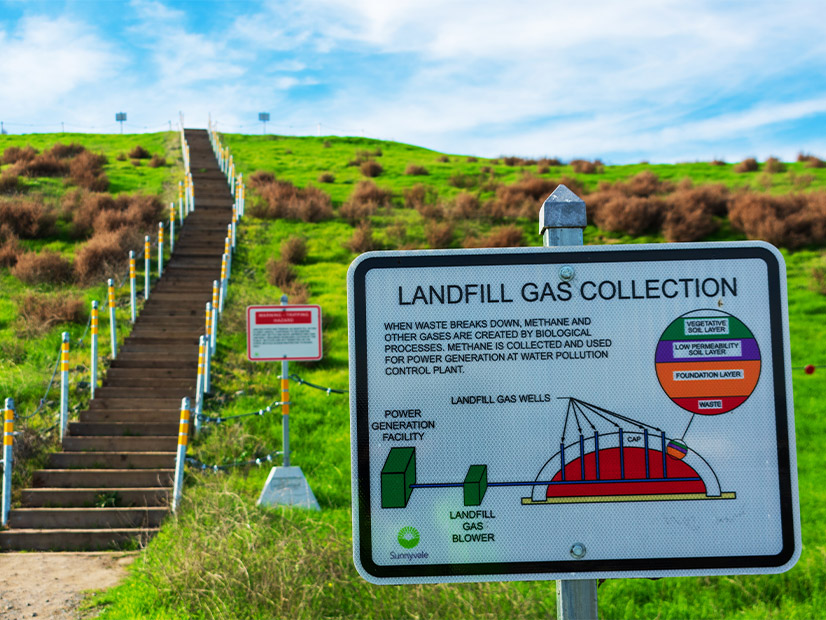The California Public Utilities Commission established biomethane procurement goals for the first time Thursday to help reduce methane emissions from landfills, dairies and natural gas use.
The decision requires gas utilities to substitute a portion of natural gas with biomethane, mostly derived from landfills, which emitted 21% of methane statewide in 2019, according to the most recent figures from the California Air Resources Board (CARB).
Methane is a more potent greenhouse gas than carbon dioxide, though it is shorter-lived in the atmosphere. Burning biomethane results in open-air emissions.
“Tackling methane and other short-lived climate pollutants is critical given our climate crisis,” Commissioner Clifford Rechtschaffen, the lead commissioner in the proceeding, said in statement. “This decision will reduce emissions from some of the state’s leading methane sources.”
The state has a mandate, under Senate Bill 1383 passed in 2014, to reduce short-lived climate pollutants such as methane by 40% below 2013 levels through 2030.
Senate Bill 1440, adopted in 2018, required the CPUC to “consider adopting specific biomethane procurement targets or goals for each gas corporation so that each … procures a proportionate share … of biomethane annually.” The state’s two largest gas corporations under CPUC jurisdiction are Southern California Gas and Pacific Gas and Electric.
The CPUC decision requires gas companies to purchase a total of 18 Bcf of biomethane annually by 2025 — potentially diverting 8 million tons of organic waste from landfills each year. Most of the waste would come from compost and the chipping and grinding of trees and other vegetation, the CPUC said.
The decision also establishes a midterm goal of procuring 73 Bcf of biomethane per year by 2030, representing about 12% of residential and small-business gas use. Utilities must secure a percentage of the total based on their proportionate share of the market.
Biomethane from dairies is already incentivized under other state programs, so it can be used only to fulfill the 2030 target after a gas utility procures enough biomethane from landfills to meet the 2025 target, the CPUC said. The decision limited dairy biomethane to 4% of the total for the 2030 goal. Dairies emitted 54% of methane in California in 2019, CARB said.
State law requires landfills to capture or destroy methane, including through burning the gas to break it down, but they continue to emit large quantities of methane.
A recent NASA study found that 30 large “super emitter” landfills produce about 40% of the total point-source emissions detected in a survey of more than 300,000 industrial facilities, dairies and landfills.



